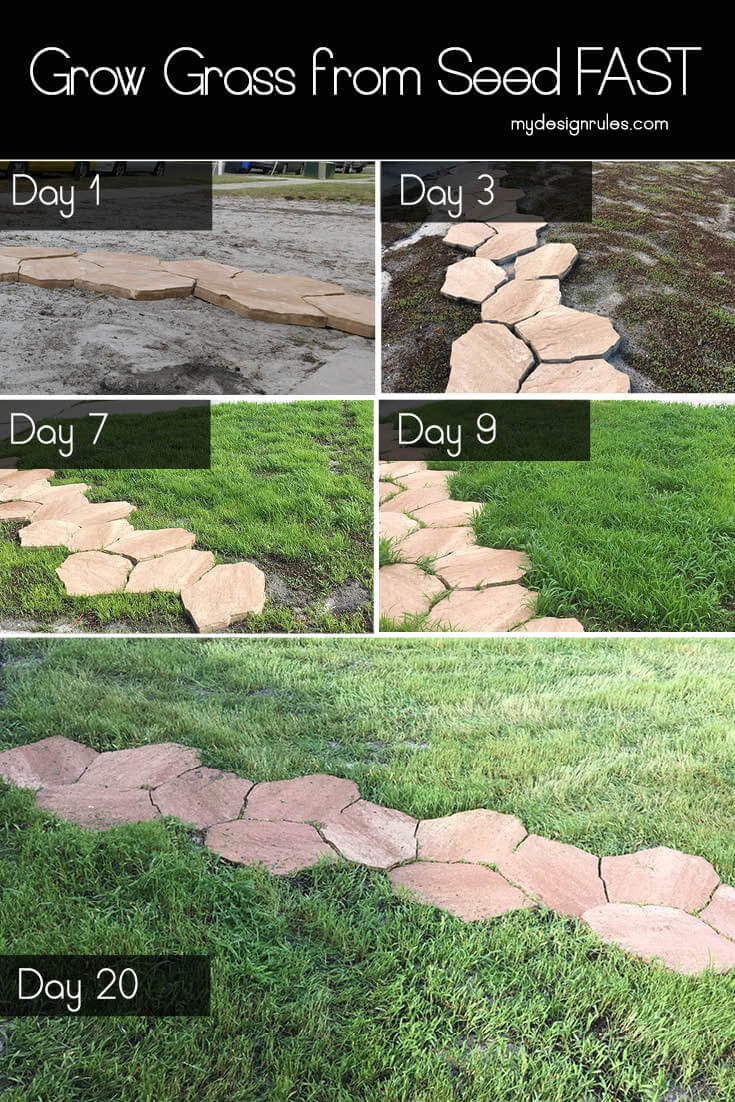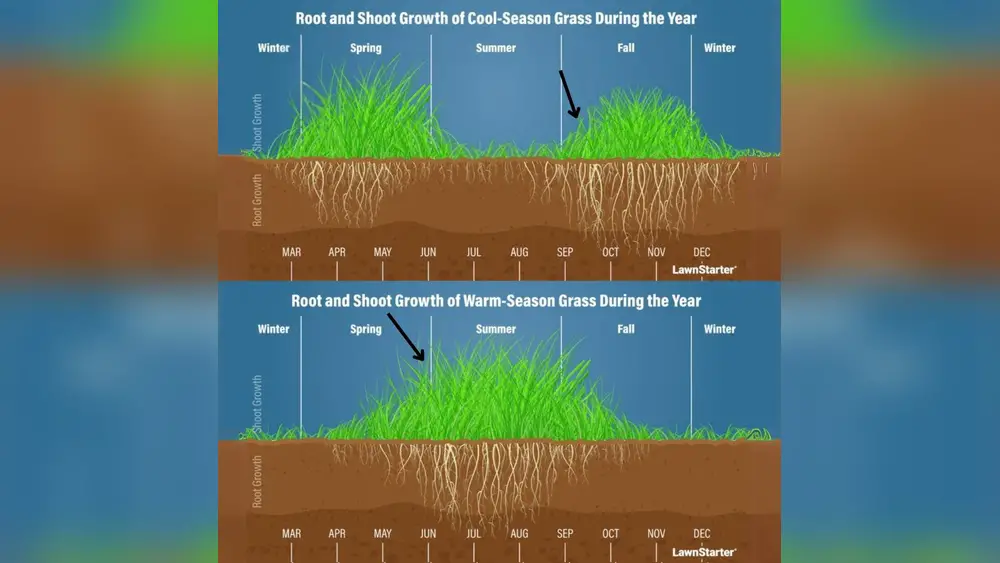Are you ready to transform your Florida lawn into a lush, green paradise? The secret lies in planting your grass seed at the right time.
Planting too early or too late can mean wasted effort, patchy growth, and frustration. But when exactly is the best time of year to plant grass seed in Florida? Knowing this can save you time, money, and a lot of headaches.
You’ll discover the ideal planting window tailored to Florida’s unique climate, how to avoid common pitfalls like weed competition and heat stress, and simple steps to make sure your new grass thrives from day one. Keep reading to find out how to get your lawn looking its absolute best all year round!

Credit: www.youtube.com
Florida Grass Types
Florida has unique grass types suited for its warm climate. Choosing the right grass helps create a healthy lawn. Each type has different care and planting needs. Understanding these types guides you on the best planting time.
Warm-season grasses thrive in Florida’s heat. They grow actively in late spring through summer. These grasses handle drought and heat well. They go dormant in cooler months but recover quickly when warm weather returns.
Warm-season Grasses
Warm-season grasses prefer soil temperatures above 65°F. Planting them in late spring or early summer works best. This timing gives roots time to establish before the intense summer heat. It also avoids frost damage common in early spring.
These grasses grow faster and outcompete weeds in warm months. They need full sun for optimal growth. Some types tolerate shade but may grow slower. Regular watering supports young grass during establishment.
Popular Varieties
Bermudagrass is a top choice in Florida. It is tough and recovers from wear quickly. Zoysiagrass is slow to establish but forms a dense, soft lawn. Centipede grass requires less fertilizer and is low maintenance.
St. Augustine grass is another favorite. It grows well in coastal areas and tolerates some shade. Bahia grass is drought-resistant and good for sandy soils. Each variety has strengths for different Florida regions and lawn uses.

Credit: www.reddit.com
Best Planting Months
Choosing the best planting months for grass seed in Florida ensures strong growth and a healthy lawn. The state’s warm climate suits warm-season grasses like Bermudagrass, Zoysia, and Centipede grass. Planting during the right months helps the seeds sprout quickly and establish before extreme heat or cold arrives. Generally, late spring through early summer offers the ideal window. During this time, soil temperatures support seed germination, and frost risks are minimal.
Optimal Soil Temperatures
Soil temperature plays a key role in seed germination. Warm-season grass seeds need soil between 65°F and 85°F to sprout well. In Florida, soil reaches this range from April to July. Planting within these months helps seeds absorb moisture and nutrients fast. Cooler soil slows growth and can cause seeds to rot. Testing soil temperature before planting can improve results. Use a soil thermometer placed a few inches deep for accuracy.
Avoiding Frost Risks
Frost can kill young grass seedlings. Florida’s winter frost usually ends by late February or early March. Planting grass seed too early may expose it to frost damage. The best planting time is after the last frost date. This reduces the risk of frost injury and helps grass grow strong. Late spring planting also avoids early cold snaps that stunt growth. Monitoring local weather helps pick the safest planting period.
Planting Timing Benefits
Planting grass seed at the right time in Florida brings many benefits. It helps young grass grow strong and healthy. Choosing the best time reduces risks like heat damage and weed problems. This leads to a lush, green lawn that lasts longer. Proper timing also saves effort and money on lawn care. Below are two key benefits of planting grass seed at the right time.
Minimizing Heat Stress
Planting grass seed when the soil is warm but before the hottest months reduces heat stress. Young grass is delicate and can dry out quickly in extreme heat. Planting in late spring or early summer gives grass time to grow roots before the peak summer heat. Strong roots help grass survive hot, dry days. This timing keeps your lawn healthier and greener all year.
Reducing Weed Competition
Planting after spring weed growth slows lowers weed competition. Weeds grow fast and can crowd out young grass seedlings. Planting too early means grass faces tough competition and weed control chemicals can harm new grass. Waiting until after the main weed season lets grass get established with less competition. This makes your lawn thicker and reduces the need for weed killers later.
Soil Preparation Tips
Preparing the soil correctly is key to growing healthy grass in Florida. Good soil helps seeds take root and grow strong. It also improves water absorption and reduces weed problems. Follow simple steps to get your soil ready for planting grass seed.
Loosening Soil
Loosen the soil to a depth of about 4 to 6 inches. Use a garden rake or tiller for this task. Breaking up hard soil allows roots to spread easily. It also helps water and air reach the seeds better. Remove any rocks, roots, or debris while loosening the soil. This creates a smooth surface for planting.
Even Seed Distribution
Spread grass seed evenly across the prepared soil. Use a seed spreader or scatter by hand for small areas. Uneven seed distribution can cause patchy growth. After spreading, lightly rake the soil to cover seeds with a thin layer. This protects seeds from birds and keeps moisture in. Even distribution ensures a lush, green lawn.
Seed Coverage Importance
Covering grass seed properly after planting is crucial for a healthy lawn in Florida. Seeds left exposed face many risks. Birds and wind can carry them away easily. Direct sunlight dries seeds fast. Without coverage, seeds lose moisture quickly. Moisture is essential for seed germination and growth. Proper coverage keeps seeds safe and moist. It helps new grass sprouts emerge strong and healthy. Understanding the importance of seed coverage improves your chances of lawn success.
Protecting Seeds
Covering seeds shields them from birds and other animals. Loose seeds attract birds that eat them quickly. A thin soil or mulch layer acts as a barrier. This prevents seeds from being blown by wind. It also stops seeds from washing away during rain. Protecting seeds ensures more sprout and grow. A higher germination rate means a thicker, greener lawn.
Improving Moisture Retention
Soil coverage helps keep moisture close to the seed. Dry seeds cannot sprout or grow well. A light layer of soil or compost holds water longer. It reduces evaporation from the soil surface. This steady moisture supply supports seed germination. Maintaining damp soil speeds up grass growth. Moisture retention is key to a lush lawn in Florida’s warm climate.

Credit: mydesignrules.com
Watering Strategies
Watering plays a crucial role in establishing new grass seed in Florida’s warm climate. Proper watering helps seeds germinate and young grass grow strong roots. Without the right moisture, seeds can dry out and fail to sprout. Watering too much can also harm the seed by washing it away or causing disease.
Adopting good watering habits ensures your grass gets the moisture it needs. It also helps protect your investment of time and effort during the planting season. Below are some key watering strategies to keep your new lawn healthy.
Maintaining Moisture
Keep the soil surface evenly moist during the first few weeks. Light, frequent watering works best to avoid drying out. Water two to three times daily for short periods in the morning and evening. Avoid heavy watering that creates puddles or runoff. Moist soil encourages quick seed germination and strong root development. Check soil daily to ensure it stays damp but not soaked.
Adjusting Frequency
After the grass begins to sprout, reduce watering frequency gradually. Shift to deeper, less frequent watering to encourage roots to grow deeper. Water once daily or every other day depending on weather and soil type. As grass strengthens, water less often but longer each time. During rainy periods, cut back or pause watering to prevent overwatering. Adjust your schedule to match temperature, rainfall, and grass needs.
Common Planting Mistakes
Planting grass seed in Florida can be tricky without knowing common mistakes. These errors reduce seed germination and weaken grass growth. Avoiding them helps establish a healthy lawn faster. Understanding these mistakes is important for a lush, green yard.
Throwing Seeds Directly
Many people think just throwing seeds on the ground works. Seeds need more care to grow well. When seeds lie on top, birds can eat them easily. Rain and wind can also blow seeds away. Germination rates drop if seeds are not protected. Lightly covering seeds with soil helps keep them safe and moist.
Ignoring Soil Contact
Good soil contact is key for seed growth. Seeds need to touch soil to absorb water and nutrients. If seeds sit on loose debris or dry soil, they might not sprout. Raking the soil before planting creates a smooth surface. Pressing seeds gently into the soil ensures they stay in place. This simple step boosts germination and root development.
Lawn Care After Planting
Proper lawn care after planting grass seed in Florida is essential for a healthy lawn. The right care helps seeds grow strong and resist weeds and pests. Paying attention to watering, soil, and weed control supports new grass development.
Young grass needs consistent moisture but not too much water. Light watering several times a day keeps seeds damp until they sprout. After germination, reduce watering frequency but increase the amount to encourage deep root growth.
Weed Control Timing
Weeds compete with new grass for nutrients and water. Avoid using weed killers right after planting grass seed. Most weed control products can harm young grass. Wait until the grass is well established before applying herbicides.
Usually, wait at least 6 to 8 weeks after planting before using weed control products. Use selective herbicides that target weeds but are safe for your grass type. Proper timing keeps your lawn green and free of unwanted plants.
Monitoring Growth
Check your lawn daily to watch seed germination and early growth. Look for bare spots where seeds may not have sprouted. Reseed those areas quickly to maintain even coverage.
Watch for signs of stress such as yellowing or wilting grass. Adjust watering and care routines as needed. Healthy grass should grow steadily and fill in the lawn space over time.
Frequently Asked Questions
When Should You Put Grass Seed Down In Florida?
Plant grass seed in Florida between April and July, when soil is warm and frost risk has passed. This timing helps young grass establish before summer heat and reduces weed competition.
Can You Just Throw Grass Seed Down To Grow?
You can throw grass seed down, but most won’t germinate without soil contact. Lightly cover seeds with soil to retain moisture and protect them. This improves growth success and prevents seeds from drying out or being eaten by birds.
Is October 1 Too Late To Plant Grass Seed?
October 1 can be late to plant grass seed in many regions. Cooler soil slows germination. Early fall is usually better.
What Is The Fastest Growing Grass Seed In Florida?
Bermudagrass is the fastest growing grass seed in Florida. It thrives in warm climates and establishes quickly. Plant between April and July for best results.
Conclusion
Planting grass seed in Florida works best between April and July. Warm soil helps seeds sprout quickly and grow strong roots. Avoid planting too early to reduce weed problems and frost risks. Giving your lawn time to grow before summer heat protects young grass.
Cover seeds lightly with soil to keep moisture and stop birds. Patience and proper care lead to a healthy, green lawn. Follow these simple tips for the best grass growth all year.

